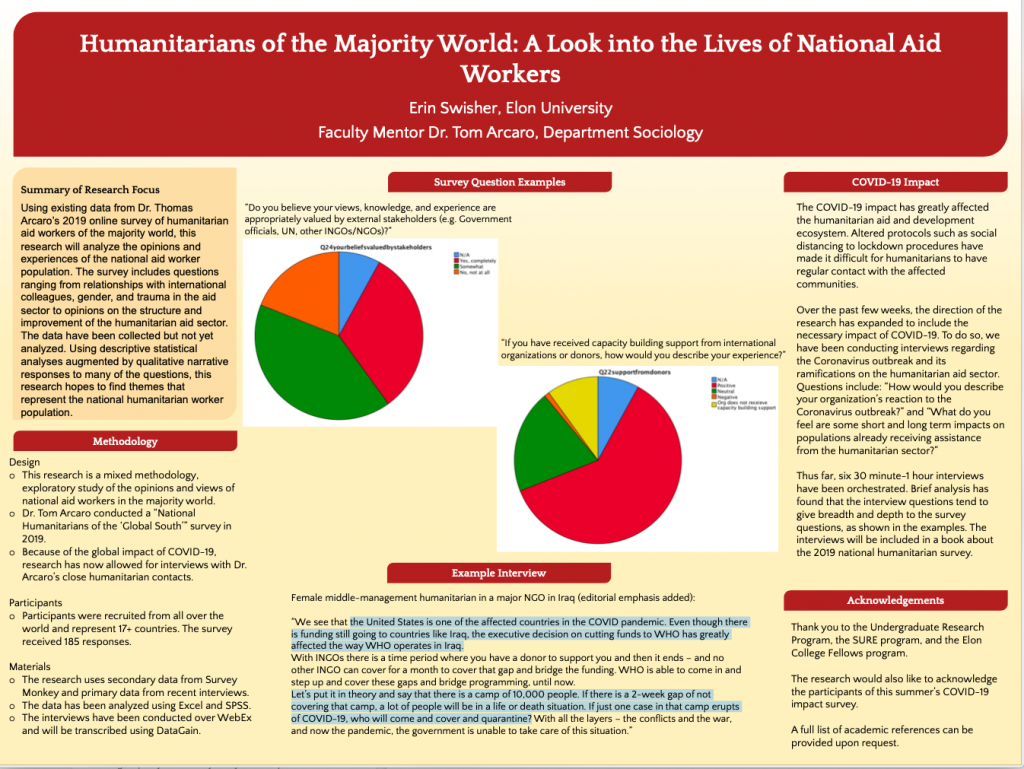Erin Swisher
Class of 2021
- Sociology

Humanitarians of the Majority World: A look into the lives of national aid workers
Project Mentor:
- Tom Arcaro, professor of sociology
Project Abstract
Humanitarian aid work saves lives of people in crisis, refuge, and loss. Every month, over one million people flee their home countries because of conflict or natural disaster. Those who aid, provide relief, and improve the quality of life for refugees and at-risk populations are known as humanitarian aid and development workers. What we know today as ‘humanitarian aid’ has only been conceptualized in the later 20th century (Rysaback-Smith, 2016). The foundation of the International Committee of the Red Cross in 1863 is accredited as the first humanitarian aid organization. The globalization of aid work came with the increase of response to natural disasters, displaced populations, and intra- and cross-country conflict, especially during the Cold War and World War I and II (Davey, et al., 2013). During these periods of war, humanitarian aid work evolved to the ‘developed nation-to-developing nation’ relationship observed today. This research is a mixed methodology, exploratory study of the opinions and views of national aid workers in the majority world. Dr. Tom Arcaro conducted a “National Humanitarians of the ‘Global South’” survey in 2019. Using this previously collected data, this research analyzes the opinions and experiences of the national aid worker population. The survey includes questions ranging from relationships with international colleagues, gender, and secondary trauma in the humanitarian aid sector to opinions on the structure and improvement of the humanitarian aid sector. In addition to quantitative data analysis, research has expanded as of Summer 2020 to include the impact of COVID-19 on the humanitarian aid sector. Semi-structured virtual interviews have been conducted with humanitarian aid workers in countries such as Iraq, Jordan, and Ethiopia. Using descriptive statistical analyses augmented by qualitative narrative responses to many of the survey questions, this research aims to find themes that represent the national aid worker population.
 Download Project Presentation
Download Project Presentation